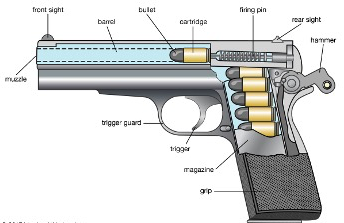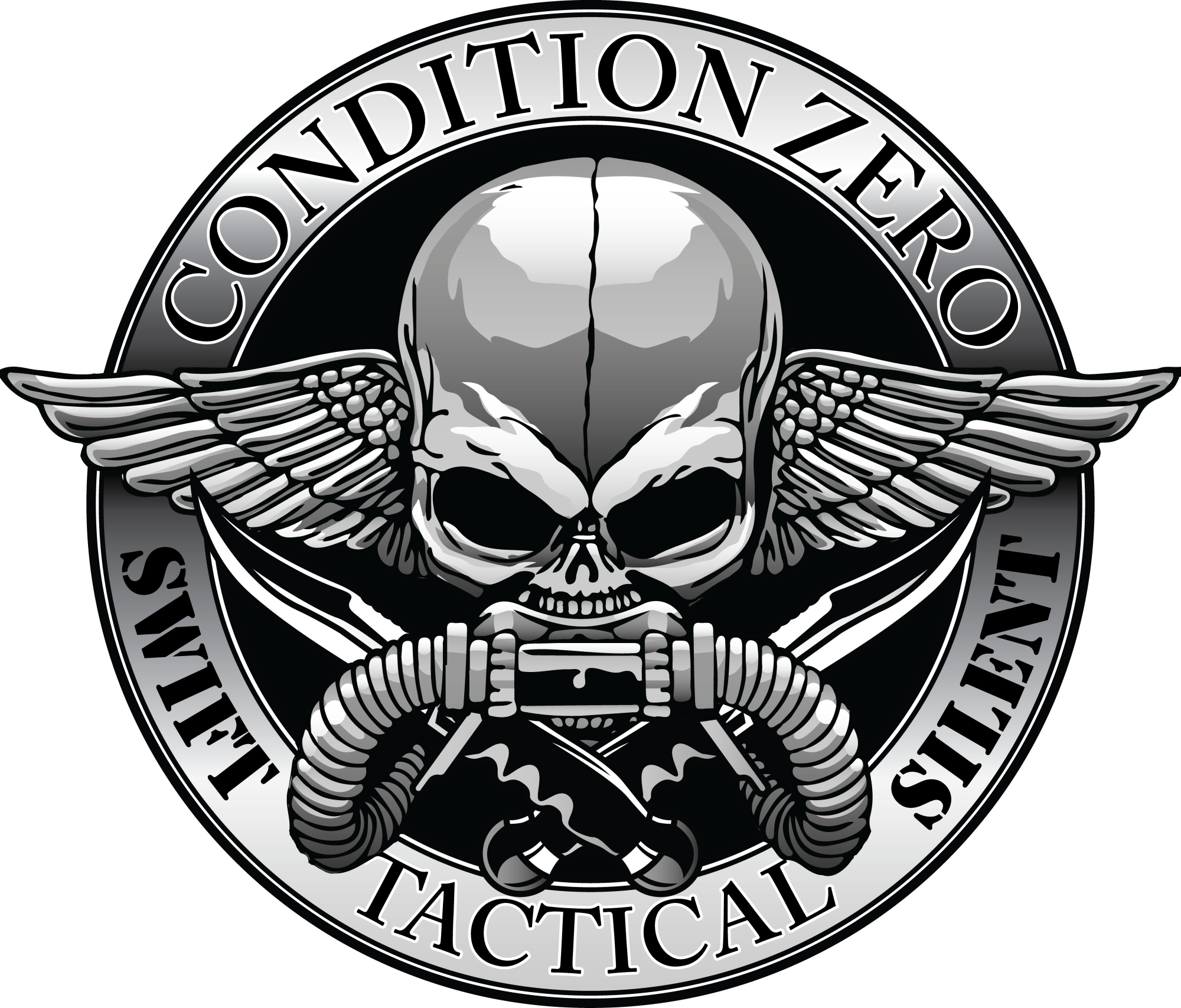
Parts Of A Gun
First and foremost, you need to know what parts form the gun. This is not a complete list and only focuses on the essential parts of a gun.
Barrel: This is the long metal tube that moves the bullet or projectile out of the gun. The longer the barrel, the more opportunity the bullet has to stabilize before it leaves the barrel.
Bullet: A bullet is a kinetic projectile, a component of firearm ammunition that is shot from a gun barrel.
Cartridge: The cartridge is the casing that contains: the primer, the bullet, and the powder that will explode in the gun and propel the cartridge forward.
Firing Pin: This is the part of the firing mechanism designed to strike the primer of a cartridge, detonating the priming compound, which then ignites the propellant (inside) or fires the detonator and booster.
Grip: This is the handle of the gun that you hold in your dominant hand in order to control the gun while firing. Larger guns like rifles and shotguns will also have a pistol grip to grasp for control, as well as the buttstock that rests against your shoulder.
Hammer: This is the mechanism that strikes the firing pin, which ignites the primer charge and the propellant and sends the bullet downrange.
Magazine: This is the container that holds the ammunition. It may be located inside the handgun’s grip or attached on the outside. The magazine should not be confused with a clip, the clip feeds the magazine.
Muzzle: This is the end of the barrel from which the projectile will exit. Precise machining of the muzzle is crucial to accuracy because it is the last point of contact between the barrel and the projectile.
Sights: These are physical markers that have to be aligned together with the target. The front sight is a small, fixed blade and the rear sight looks like a valley or a notch.
Trigger: This is the lever under your pointer finger that, when pulled backward, initiates the cycle to fire the ammunition. It is typically a small curved piece of metal.
Trigger Guard: This is the loop surrounding the trigger of a gun and protects it from accidental discharge.
How a Gun Works
For a gun to fire, two things must happen:
- Create a reaction by pulling the spring-loaded trigger, which sends the firing pin forward into the ammunition.
- Ensure the ammunition fits the caliber of the gun.
It is important to mention that ammunition is often incorrectly called bullets; a bullet is only the piece that passes through the target. The correct term is a cartridge, which is put into a magazine or loaded directly into the gun. Upon firing, the reaction operates the same way a car’s engine uses a spark plug to create movement. The spark is caused when the firing pin hits the primer in the back of the cartridge, which lights the powder around the bullet. The gunpowder burning inside the casing creates pressure that forces the bullet out the end of the gun’s barrel at a high velocity.

